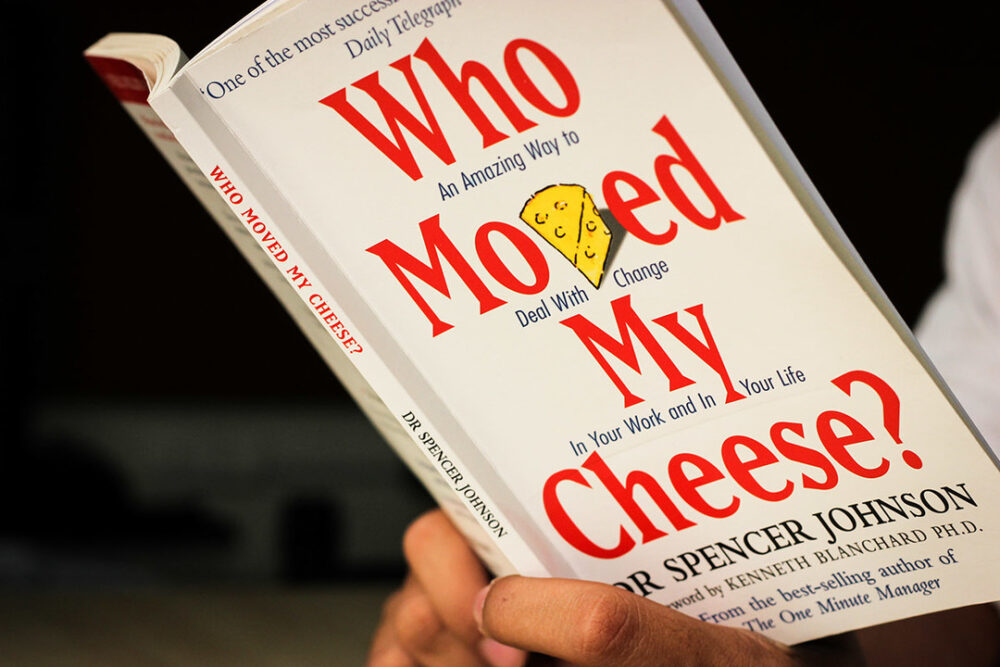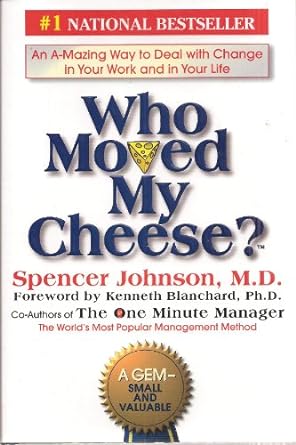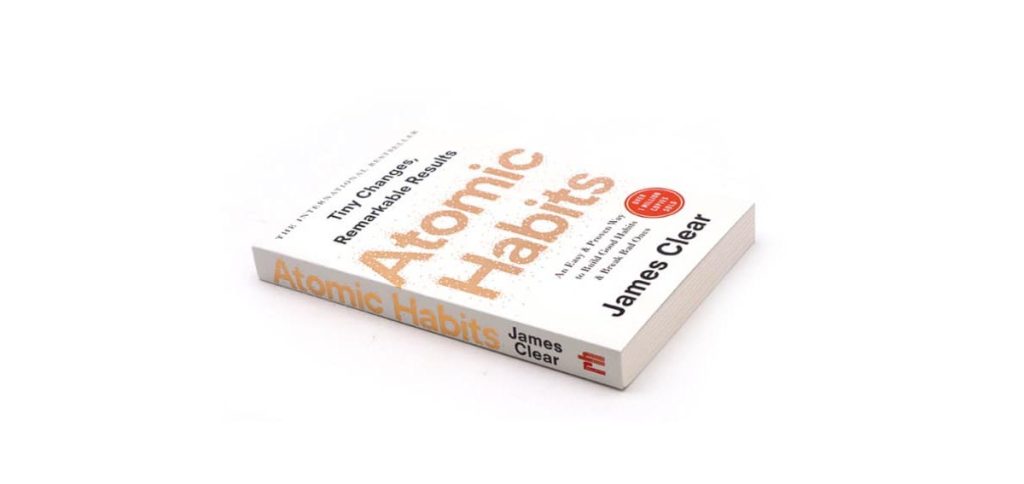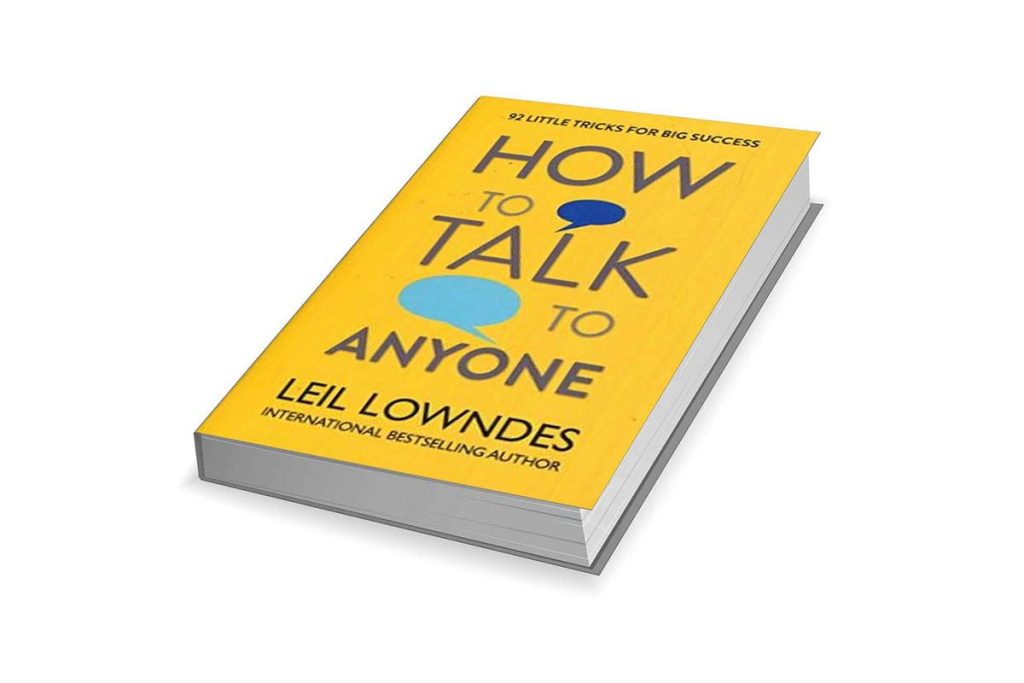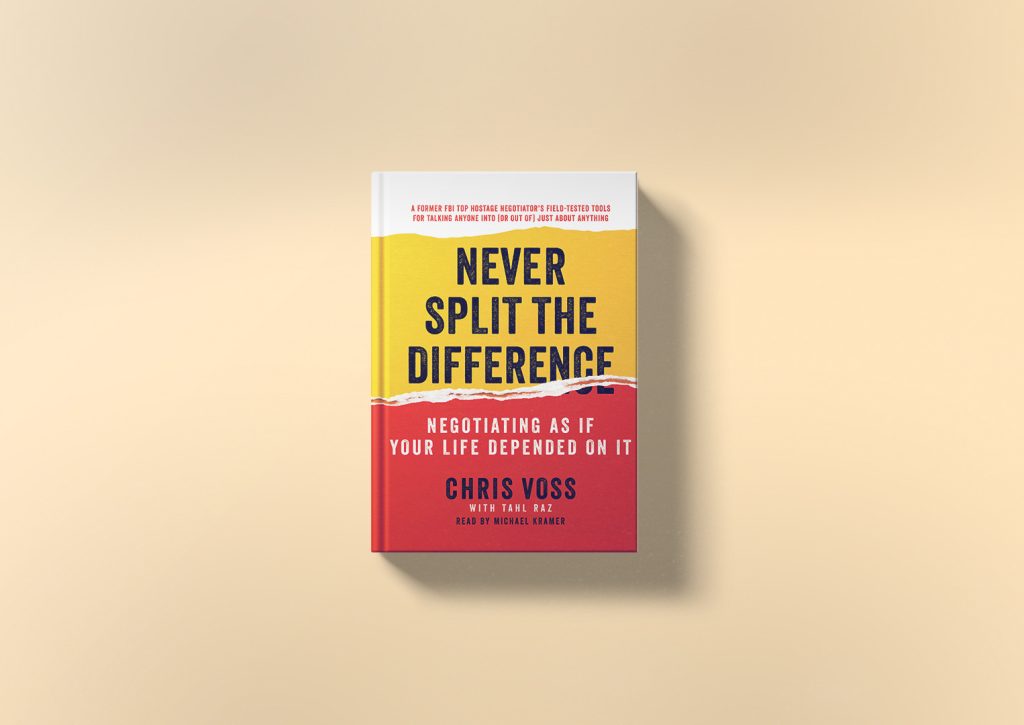If you’re looking for a “Who Moved My Cheese” summary that gives you the full picture, you’ve landed on the right guide. When you hear the phrase “Who Moved My Cheese,” it might conjure images of a simple children’s story. However, the famous self-help and psychology book is far more than that. The profound parable has become one of the most important resources on the complexities of change in life and work.
In this article, I will provide a comprehensive “Who Moved My Cheese” summary, exploring its narrative, key lessons, and the impactful messages hidden within its pages. Whether you’re encountering this book for the first time or revisiting it, you’ll find valuable insights into managing change effectively.
This article may contain affiliate links. This helps me continue providing valuable learning content sustainably for readers. Feel free to use the link, or not. In any case, thank you for checking out my blog!
What Is Who Moved My Cheese About?
So what is “Why Moved My Cheese?” really about? Let’s look at some important themes in the book.
“Who Moved My Cheese?” is a compelling parable that delves into the complexities of dealing with change in our personal and professional lives. When I first came across this book, I was struck by its simplicity and profound message. The story, though brief, encapsulates a universal truth: change is inevitable and how we respond to it shapes our path to success and happiness.
The Book Setting

The book is set in a maze, symbolizing the environment we navigate in our daily lives, be it at work, in relationships, or our personal goals. The “cheese” represents what we desire in life – it could be a job, a relationship, health, peace of mind, or even spiritual fulfillment. The essence of the story lies in how different characters in the maze respond to the disappearance of their cheese, which they had once found but is now gone.
As a metaphor for life’s challenges and uncertainties, “Who Moved My Cheese?” presents a vivid illustration of how different attitudes and mindsets determine our ability to adapt to change. The characters in the book, Sniff and Scurry, two mice, and Hem and Haw, two little people, each exhibit distinct responses to change. Their reactions symbolize common attitudes we often see in our daily lives.
The Narrative
I believe that the simplicity of the narrative is its biggest strength. It conveys complex life lessons through straightforward, relatable characters and scenarios. For me, the story was an eye-opener – it made me reflect on my approach to change and uncertainty. Whether it’s a sudden shift in the job market, a personal setback, or an unexpected opportunity, how we handle change can be a game-changer. At the core, “Who Moved My Cheese?” shows us how we can best embrace, adapt to, and thrive admist change and the new realities it creates.
In the following sections, I’ll delve deeper into the book’s authorship, provide a detailed summary, highlight key takeaways, and share my personal reflections on how this book can be a guiding light in navigating the ever-changing maze of life.
Who Wrote “Who Moved My Cheese?”
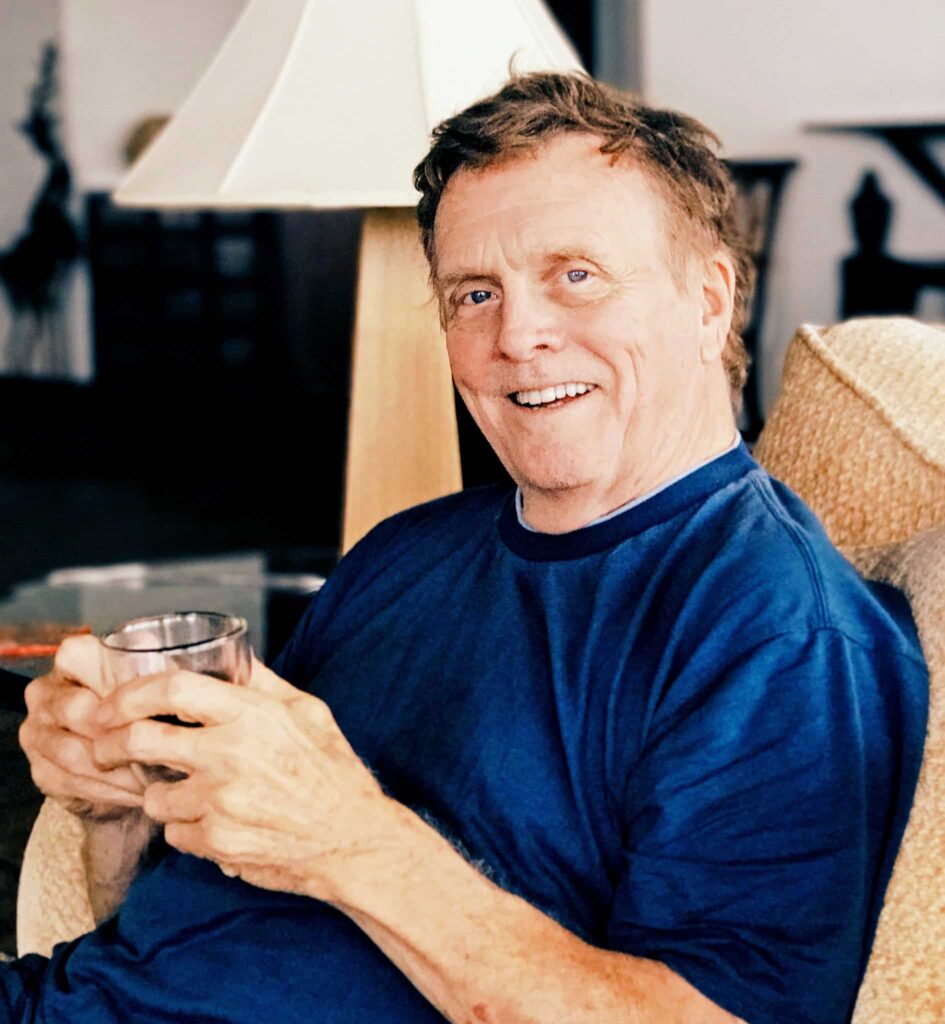
“Who Moved My Cheese?” was penned by Dr. Spencer Johnson, a renowned author acclaimed for his inspiring works that delve into the intricacies of human behavior and personal development. When I discovered Johnson’s background, it added an extra layer of appreciation for his work. He wasn’t just a storyteller; he was a seasoned observer of life and human psychology.
Dr. Johnson’s expertise in medicine and psychology is evident in how he crafts his narratives. Born in 1938 in Mitchell, South Dakota, he pursued a degree in psychology at the University of Southern California and later obtained his medical degree from the Royal College of Surgeons in Ireland. This blend of psychological and medical training provided him with a unique perspective on how individuals react to and manage change – a theme central to “Who Moved My Cheese?”
Before achieving global recognition with “Who Moved My Cheese?” Dr. Johnson co-authored “The One Minute Manager” with Ken Blanchard, another widely celebrated book in the business and self-help genre. His ability to distill complex concepts into simple, digestible narratives has earned him a special place in the hearts of readers worldwide.
Dr. Johnson’s work, particularly “Who Moved My Cheese?” transcends the traditional boundaries of self-help and motivational literature. It resonates with a diverse audience, from corporate professionals to individuals seeking personal growth. His storytelling is not just about providing answers; it’s about prompting introspection and inspiring change.
Who Moved My Cheese? Summary
“Who Moved My Cheese?” is a thought-provoking parable illustrating how individuals deal with change. We learn many principles and lessons from Sniff and Scurry and the two miniature humans – Hem and Haw – as they search for cheese, which symbolizes what we desire in life. The narrative is cleverly structured to mirror the varied reactions people exhibit when faced with change, particularly when their comfort zones are disrupted.
Chapter Summaries
Let’s look at some important points and lessons from each summary:
Chapter 1: The Characters and the Maze
- Introduces the four characters, Sniff and Scurry, the mice, and Hem and Haw, the little people.
- The maze they live in represents the environment we all navigate, filled with challenges and opportunities.
Chapter 2: The Search for Cheese
- The characters explore different parts of the maze, searching for cheese.
- This chapter symbolizes the pursuit of desires, be it career success, personal goals, or life’s pleasures.
Chapter 3: Finding Cheese at Cheese Station C
- All characters find an abundant supply of cheese at Cheese Station C.
- They react differently: the mice stay alert to changes, while Hem and Haw grow comfortable. This depicts how people become complacent in success.
Chapter 4: The Disappearance of Cheese
- When the cheese suddenly vanishes, Hem and Haw are shocked and in denial, while Sniff and Scurry quickly move on.
- This chapter highlights different responses to change: adaptability versus resistance.
Chapter 5: The Mice Move On
- Sniff and Scurry immediately start looking for new cheese.
- This parable shows how important it is to have the readiness to adapt to change and explore new opportunities.
Chapter 6: Hem and Haw’s Reaction
- Hem and Haw feel betrayed and fearful and refuse to leave Cheese Station C.
- Their reaction represents the common human emotions of denial and fear in the face of change.
Chapter 7: Haw Overcomes His Fears
- Haw begins to understand the need for change and ventures into the maze. His journey symbolizes the process of overcoming fear and embracing new challenges.
Chapter 8: New Cheese
- As Haw navigates the maze, he learns valuable lessons about change, eventually finding new cheese.
- His journey teaches the importance of letting go of old beliefs and adapting to new realities.
Chapter 9: Reflections from the Maze
- The final chapter provides a reflection on the lessons learned, emphasizing the benefits of adapting to change and the pitfalls of remaining stagnant.
5 Key Takeaways from “Who Moved My Cheese?”
Of all the lessons that stand out in this book, these are some of the key ideas that should leave a lasting mark for us readers:
1. Change Is Inevitable
One of the most profound takeaways from “Who Moved My Cheese?” is the inevitability of change. The story vividly illustrates that change is a constant element in our maze of life. Just like the cheese in the story, the things we often take for granted – jobs, relationships, health – can shift unexpectedly. Embracing the fact that change is inevitable prepares us mentally to adapt when it occurs.
2. Anticipate and Prepare for Change
Sniff and Scurry demonstrate the importance of anticipating change. They remain vigilant, noticing the small changes in the cheese supply, signaling its eventual depletion. This key lesson teaches us to stay alert to the subtle shifts in our environments, whether it’s at work, in personal relationships, or other areas of life, and to prepare for potential changes.
3. Overcome the Fear of Change
Haw’s journey symbolizes the struggle to overcome the fear of change. Initially paralyzed by the loss of the cheese, he eventually steps out of his comfort zone to search for new opportunities. This takeaway is a powerful reminder that fear is often the biggest obstacle to adapting to change, and overcoming it is a crucial step towards personal growth and success.
4. Adaptability Leads to Success
Adaptability is a recurring theme in “Who Moved My Cheese?” The story shows that those who quickly adapt to change are the ones who find new cheese, or opportunities. This lesson is vital in today’s rapidly changing world. Being flexible and open to new ways of thinking and doing can lead to discovering new paths to success and fulfillment.
5. Enjoy the Journey of Change
Finally, the book teaches us to enjoy the journey of change. Haw learns to laugh at his mistakes and fears, which lightens his journey through the maze. This takeaway encourages us to embrace change with a positive attitude, learn from the experience, and enjoy the process of finding new cheese. It’s a reminder that the journey can be as rewarding as the destination.
Final Thoughts
“Who Moved My Cheese?” catalyzes introspection and change. The narrative, while simple, packs a powerful message about the nature of change and our responses to it. I encourage you to dive into this insightful book, explore its lessons, and see how they resonate with your life’s maze.
As you turn its pages, reflect on your approach to change – are you a Sniff and Scurry, quick to adapt, or more like Hem and Haw, hesitant and resistant? The beauty of this book lies in its ability to mirror our own experiences, making it a personal journey of discovery.
I invite you not only to read “Who Moved My Cheese?” but to share your insights and takeaways. Whether it’s a discussion with friends, family, or colleagues, you’ll find that its themes spark meaningful conversations and perspectives. So, embark on this journey through the maze, and let’s share the wisdom we find along the way.
Check out this summary of “Leaders Eat Last” by Simon Sinek or “The 5 AM Club” by Robin Sharma next.
